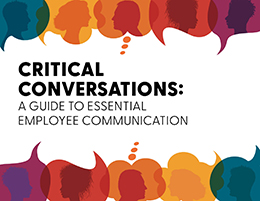A global human talent shortage plagues businesses around the world. According to management consulting firm Korn Ferry, if left unaddressed, the shortage could reach more than 85 million people by 2030. At this point, the shortage could result in about $8.5 trillion in unrealized annual revenues, too.
Your business needs skilled professionals on staff. Yet, identifying, attracting, and retaining talent remains difficult. Fortunately, options are available to help you strengthen your workforce, regardless of your recruiting strategy. These options include upskilling and reskilling.
What Are Upskilling and Reskilling, and Why Should Your Business Use Them?
Upskilling involves learning new skills or enhancing existing ones. For instance, an employee can complete a training program that allows them to add new skills or improve current ones to further contribute to their company’s success. In this instance, the employee and their business can reap the benefits of upskilling.
Comparatively, reskilling involves developing new skills for a new role. For example, an employee who wants to move into a management role may enroll in online management courses. Upon completion of these courses, the worker will possess a wide range of management skills. Plus, the worker can transition into their management role without a steep on-the-job learning curve.
Ultimately, there is a lot to like about upskilling and reskilling. Key reasons why businesses utilize upskilling and reskilling across their workforces include:
1. Increased Employee Engagement and Retention
Upskilling and reskilling provide businesses with myriad opportunities to invest in their employees. Meanwhile, workers can leverage upskilling and reskilling programs to bolster their skill sets. These employees can feel great about the fact that their businesses are committed to their success. The result: companies that leverage upskilling and reskilling can maximize their employee engagement and retention levels.
Struggling with turnover or employee motivation, ? GPS can help you build a more engaged, loyal workforce.
2. Improved Customer Satisfaction
Skilled employees can deliver exceptional contributions across a business — and customers are likely to notice. So, if a company implements an upskilling or reskilling program, it can help its workers become better in various areas. These workers can then apply their new knowledge and insights to assist customers like never before. This can lead to improved customer satisfaction, along with increased revenues and exemplary customer loyalty.
3. Talent Recruitment
Businesses want to attract top job candidates, regardless of role. With upskilling and reskilling programs, a company can distinguish itself to superb candidates. A company can use these programs to show job seekers it is willing to invest in their futures. This can help the business promote itself to candidates. And it may allow the company to recruit candidates who want to stay with it long into the future.
How to Close the Skills Gap Across Your Workforce
Your business can use upskilling and reskilling programs at any time. However, to get the most value out of these programs, it helps to plan. This ensures your upskilling and reskilling programs empower you to close skill gaps across your company.
Now, let’s look at five tips to help you optimize the ROI of your upskilling and reskilling programs.
1. Establish Skill Adjacencies
Identify skill adjacencies across your workforce. To do so, look for workers who possess skills that align with those required to perform various tasks. Next, you can provide these employees with training to help them advance their skills.
2. Create Training Programs for All Types of Learners
Set up training programs tailored to different types of learning styles. For instance, some educational programs can leverage microlearning, which involves short videos and other media that cover topics in short increments. On the other hand, in-person and workshop classroom-style learning sessions can cater to workers who prefer hands-on learning. You can even offer online training sessions that employees can complete anywhere an internet connection is available.
3. Reward Workers Who Engage in Your Programs
Celebrate workers who upskill and reskill. You can offer bonuses, gift cards, and other financial rewards to employees who complete upskilling and reskilling programs. Or you can recognize these workers’ accomplishments during business meetings.
4. Provide Multiple Program Options
Give workers the flexibility to choose upskilling and reskilling programs that correspond to their career goals. Offer multiple programs, and employees can select ones that can help them accelerate their career growth.
5. Make Your Programs Accessible to Everyone
Ensure workers across all departments can access your upskilling and reskilling programs. This enables employees to gain the skills they want to accomplish their career aspirations.
Need Help Bridging the Skills Gap Across Your Business? Partner With a Recruiting Company
Upskilling and reskilling programs can deliver tremendous value. And, if you use these programs in combination with an effective talent recruitment strategy, your business can avoid a skills gap that can otherwise hamper its growth.
If you need help bridging the skills gap across your business or want to develop and implement an effective recruiting strategy, it pays to partner with a reputable recruiting company. The right recruiting company can help you get the best results from your upskilling and reskilling programs — and get more done.


 Georgette Sandifer
Georgette Sandifer  Smith Richardson
Smith Richardson